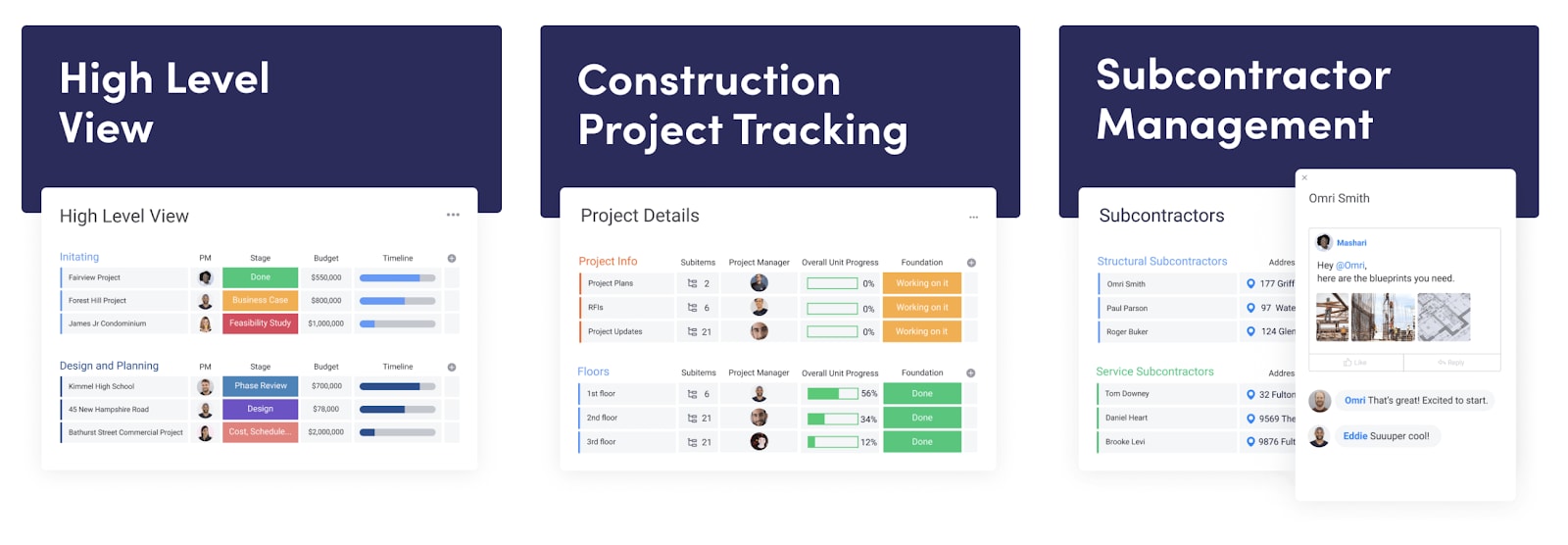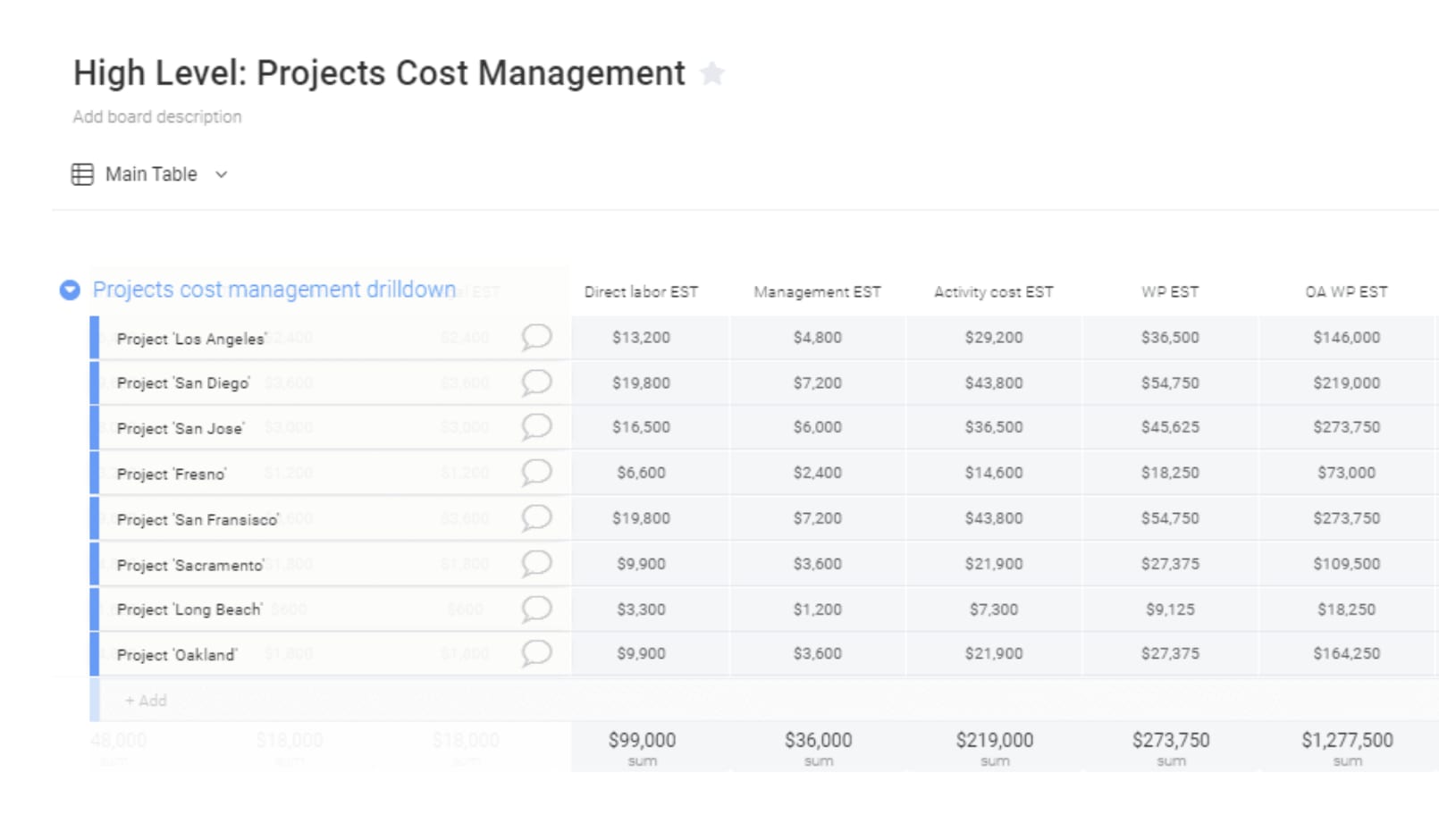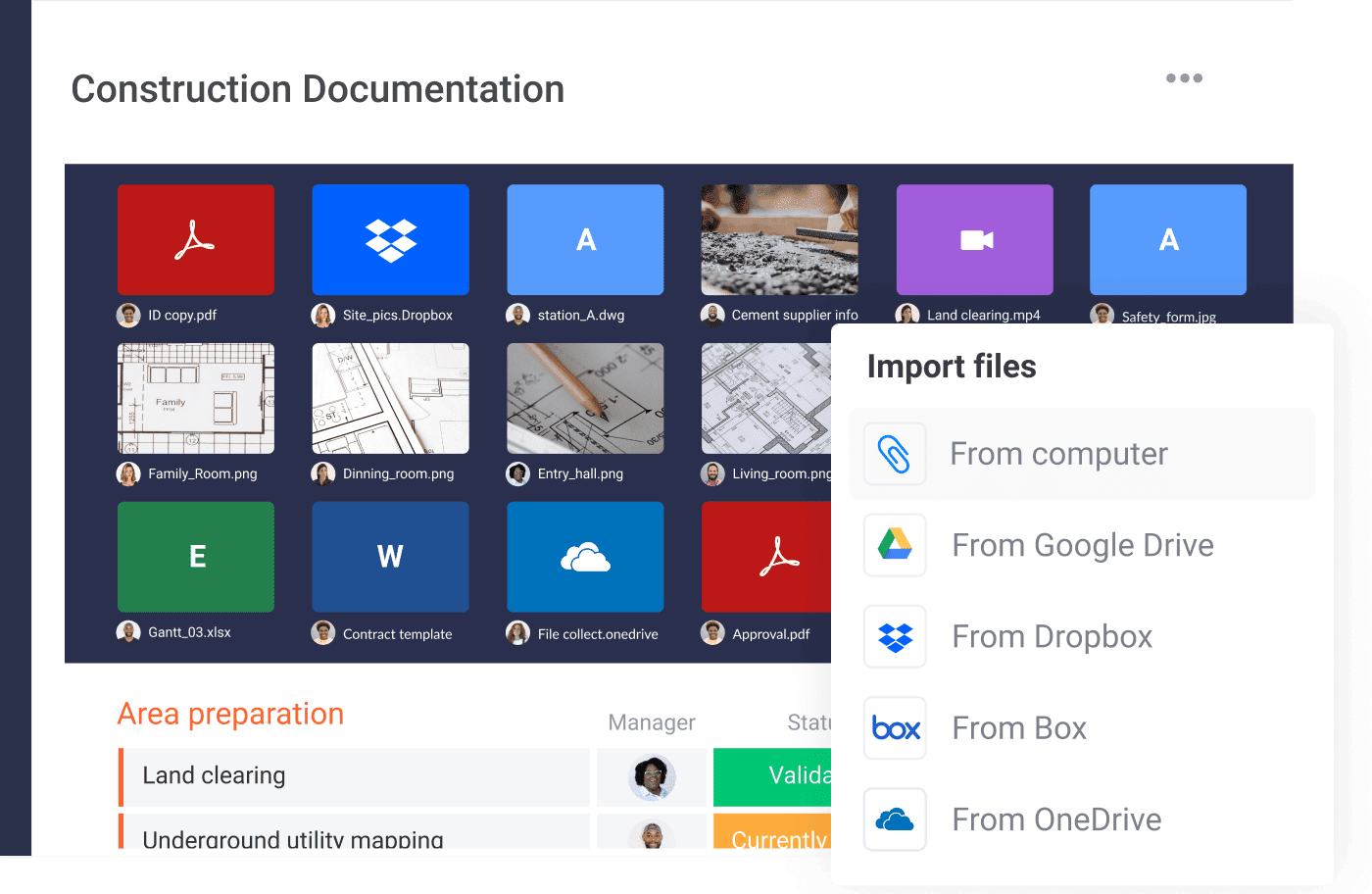In the worlds of project management and construction management, there’s really only one thing you can virtually guarantee will happen—the scope will change.
If you aren’t familiar with project scope, it’s essentially an agreement that outlines the boundaries of a project. It lays out the goals, deliverables, costs, deadlines, and more. It says what you will and won’t do.
Changes in project scope are expensive for project managers, and the best way to protect yourself is with a time and materials contract.
In this article, we’ll define what a time and materials contract is, discuss why they’re important, and show you how to create one of your own.
What is a time and materials contract?
Materials refer to the cost of raw materials for the project — such as timber for a building project — and may also include subcontractor costs and any mark-up amount.
Time refers to the labor hours of the workers needed to complete the job successfully — usually multiplied by a set per hour rate (often by role).
A time and materials contract is an agreement between the contractor or project manager and the business that outlines predetermined unit costs for materials and labor rates.
A lot can change over the course of a few months or few years. If you set a flat price for the project and a labor strike occurs, material costs rise, or heavy machinery costs go up, then you’re stuck doing a project with greater costs than originally anticipated.
It could get so bad that a project costs you more money than your profit, and you end up losing money.
At its core, a time and materials contract simply states that no matter what, you’ll get reimbursed for any material and labor costs incurred.
What are the pros and cons of a time and materials contract?
There are many pros to a time and materials contract, but there are some drawbacks too.
Here’s a structured breakdown of both:
Pros
- You can easily pivot if the scope of the project changes since time and materials are still the foundation of the project.
- You can handle roadblocks or delays with confidence since any change in time or materials gets reimbursed.
- Any project negotiations become simple since no matter what happens, the billable hours and materials are sorted out.
Cons
- Clients may negotiate reduced mark-up rates on materials or reduced billable labor rates that eat into the contractor or PM’s profit.
- It can be challenging to keep up with billing the proper hours.
- There’s no incentive for being efficient since if you finish early, you get paid less.
- You’re still fronting your own costs, so if the customer refuses to pay, you’re left holding an expensive bag.
Some of these cons are easy to get around. For example, you can add a bonus to the contract for finishing early or require payments upfront and at certain milestones.
How to create a time and materials contract of your own
As with all contracts, it’s smart to get professionals involved to cover all your bases.
If you’re convinced a time and materials contract is perfect for your next project instead of a fixed-price contract, then here’s the low down on what to include and why:
Lead with labor rates
Most projects require people with different skill sets, trades, and specialties. Naturally, each one should be compensated fairly for the work they do.
A time and materials contract will set a “list price” for project managers, field staff, administrative staff, engineers, and more.

Plug in the wrong hourly rate or total labor rate, and you could end up leaving a lot of money on the table.
That’s why having a Work OS like monday.com is so powerful when paired with a time and materials contract.
You can track each set price for labor along with the hours using monday.com’s time tracking system.
Incentivize with max labor hours
Completing a job efficiently and on time — or ahead of schedule — isn’t really an incentive with time and materials contracts.
Many companies do, however, offer a bonus for meeting deadlines or getting ahead of schedule.
Another way to incentivize the efficient completion of the project is by determining maximum labor hours in the contract.
Maximum labor hours are aptly named because they signify the maximum number of labor hours a project should take and subsequently puts a cap on what the contract holder has to pay.
The labor rate applies all the way up to the max, then one of 2 scenarios happens:
- Work continues, and the contract holder doesn’t have to pay for excess labor
- Work stops while the subcontractor and contractor holder work to agree on new terms
The former is more common, but the latter is a real possibility. Often it’ll state which route is appropriate in the details of the time and materials contract.
Set a predetermined material mark-up
The industry standard for material mark-up changes with the wind. Some swear by 10%, but that’s not written in stone. You’ll need to find the sweet spot that works for you, the customer, and the market.
If your material mark-up is between 10 to 20% and your actual cost is $2,000 for lumber, then you’d bill the customer $2,200 to $2,400 as an example.

What’s most important is understanding how to calculate the mark-up price and properly track it.
Ideally, you’d have a board like the one above that outlines project costs by project and provides a clear figure for labor costs, direct materials cost, mark-up, and more.
Add in buyer protection with a not-to-exceed cap
Plenty of projects work on a fixed-price contract that protects the buyer from paying exorbitant prices.
With time and materials contracts, you can institute a not-to-exceed cap. It’s great for budgeting because it puts a cap on how much the contract for the entire project can cost.That requirement includes billable labor and materials. Once the project meets the not-to-exceed cap, any further costs are the responsibility of the contractor or project manager to cover.
It protects the buyer, but it also incentivizes sticking to the project schedule and staying within the agreed-upon total contract price.
Do your due diligence before presenting the contract
Now that you’ve determined a project cost, built-in room for profit, and fine-tuned your proposed contract, it’s time to get guidance and approval from stakeholders, experts, and legal professionals.
Factor in indirect costs into the price and prepare yourself for potential swings. To start, have your estimators double-check material and labor prices with vendors and workforce leaders.
Check with your accounting team and ensure you’ve built enough wiggle room in the contract to remain profitable even if larger changes in scope or the market occur. To protect yourself from risk, get your legal team to look over the contract before sending it out.
Backing up your time and materials contract with monday.com
Gaining acceptance for your time and materials contract is a milestone by itself, but it doesn’t mean you can totally relax. Now it’s your job to live up to it and make sure your estimates and timeline add up.
To do that properly, you’re going to need a place to store your pricing model, keep up with vendor and subcontractor relations, track your price sheets, and monitor the project development process.
That’s where monday.com becomes your champion.

monday.com stores your time and materials contract, so you always have a “backup” on file. Project professionals and stakeholders have shared access to the backup file and can access it from anywhere.
File storage is just one of many features you’ll love about monday.com. We also have:
- Built-in whiteboards that make it feel like you’re sitting side-by-side with your team
- Task-based communications that get you the help you need when you need it most
- Video conferencing and chat integrations that provide that over-the-shoulder guidance
- Streamlined automation tools that take the busy admin work off your plate
- 8 different data visualizations that provide insights hard to replicate anywhere else
The list of monday.com features is endless, and so are the possibilities.
Covering your bases
It’s not enough to sign a contract and forget it. That binding agreement is full of promises both you and your team are accountable for. Rather than leaving the outcome to chance, try driving it forward.
Lean on modern technology like monday.com to streamline your workflow, track your labor and material prices, track billable hours, and get more done.
But don’t take our word for it. Try out our Project Cost Management Template for yourself. We’re confident you’ll see the difference.


